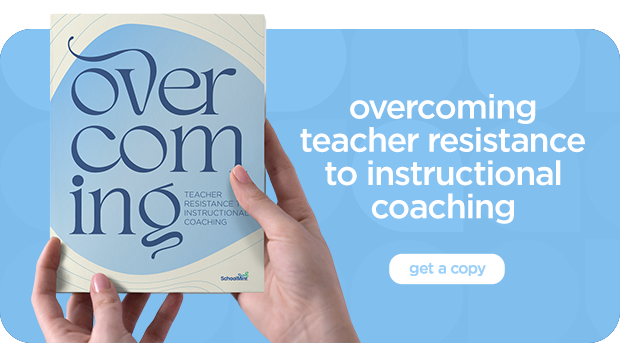How to Stop Teacher Turnover from Costing You Money
Teacher retention is a real concern in today’s schools — and the problem is getting only worse in many schools and districts.
The issues with teacher turnover include not just the difficulty of finding new teachers to replace the ones who are leaving but also the extraordinary cost incurred when teachers leave their jobs.
Teacher turnover is expensive — to the tune of $20,000–$30,000(!) per teacher, according to this report. With budget shortages common in school systems, this is one expense that is both unwelcome and unnecessary.
To retain teachers and stop costing schools money that could be put toward other critical needs, you have to look to practical, proven solutions:
- Providing mental health support for teachers to ease burnout, anxiety, and depression related to their role.
- Providing regular instructional coaching to give teachers the support and development they deserve.
In this blog, you’ll learn about the latter part: coaching as a means to support teachers.
(You can read more about the former in our previous blogs, Understanding Mental Fitness for Teachers and Identifying Teacher Burnout.)
With the proper support, recognition, and encouragement, teachers can see the classroom as a place where they can build a career that’s both challenging and rewarding.
Teacher Turnover: A Troubling Trend
While some schools and districts aren’t having teacher shortage problems, other school districts across the country are facing shortages that are disrupting school communities, hurting student outcomes, and placing additional pressures on teacher who remain.
Of the ever-increasing demand for teachers, the vast majority of the demand stems from when teachers leave the profession — making teacher turnover by far the single biggest factor in our schools’ shortage of educators.
What’s more, anywhere between 30–50% (the exact percentage depends on the source; there is some slight disagreement online) amount of teachers who leave within their first five years — the most critical, formative years for any new educator.
Ouch.

The Costs Associated with Teacher Turnover
High teacher turnover rates don’t just hurt the academic outcomes of students. They also cost schools a lot of money in wasted resources.
How much money?
The total cost of the revolving door of teacher turnover nationwide is conservatively estimated to be a staggering $8.5 billion per year.
If you divide that by the 2021 number of total public school teachers (approx. 3,197,000), that $8.5 billion shakes out to about $26,000 per teacher.
That’s money you can’t recoup.
The sky-high estimated cost of teachers leaving is calculated purely on the school level and does not include the cost of teachers who move within a school district. Nor does that number include any lost state or federal investments.
This means the total cost spent on this issue yearly is likely even higher than the amount estimated.
How Teacher Coaching Reduces Teacher Turnover
After reading through all of these statistics, you’re probably eager to learn about an effective solution to this pressing problem.
With teachers reporting more manageable workloads and better working conditions as their main reasons for quitting, the solution lies in addressing these two primary concerns.
The Gallup Q12 survey, long the standard-bearer for measuring employee engagement, includes the following question as part of its survey: “Is there someone at work who encourages your development?”
For far too long, teachers have been left on their own to navigate the complex emotional and instructional waters of classroom leadership.
Alongside other measures of engagement, encouraging development by providing feedback (as opposed to sit-and-get PD) communicates not just a commitment to development but also a commitment to personalized development.
That makes all the difference.
When leaders provide teachers the consistent support and feedback they deserve, teachers can see their practice improving and feel more on top of their workloads.
This can take the form of principal feedback through classroom observations and coaching meetings, peer observations, and many other coaching touch points between faculty members that create a school-wide culture of growth through feedback.
In addition to in-the-moment coaching, by establishing a regular coaching cycle, school leaders can track and analyze teacher progress throughout the school year.
This helps to better align in-school professional development directly to teachers’ growth needs and to improve classroom outcomes.
Additionally, increasing the touch points between administrators and teachers organically creates an open dialogue about working conditions and ideas for improvement that go beyond instructional outcomes.
Beyond creating a supportive environment where teachers feel comfortable with and positively challenged in their work, regular feedback and coaching builds relationships between teachers and their administration — making teachers feel like a valued part of their school community.
Share this
You May Also Like
These Related Stories

Digging into Dissatisfaction: How Coaching Helps Teacher Retention

How Can School Leaders Retain Teachers?



